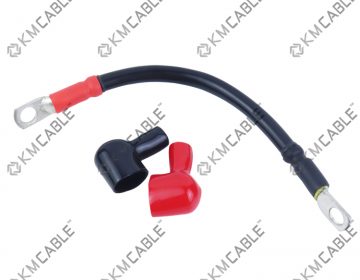
Media cables have played a pivotal role in the evolution of audio transmission, facilitating the journey of sound from microphones to speakers. This blog explores the fascinating history and advancements in media cables, shedding light on the diverse types of cables that have shaped the way we experience audio.
Early Beginnings
The roots of communication cables can be traced back to the early days of telegraphy and telephony. Simple copper wires were the conduits for transmitting electrical signals, laying the foundation for more sophisticated cable systems.
Analog Era
As technology advanced, so did the need for more efficient and reliable communication cables. The analog era witnessed the introduction of coaxial cables, featuring a central conductor surrounded by insulating layers and a grounded shield. These cables were a significant improvement in terms of signal quality and resistance to interference.
Introduction of Microphones and the Birth of XLR Cables
With the advent of microphones, a new era of audio communication began. XLR (eXternal, Locking, Rubber) cables quickly became the standard for transmitting balanced audio signals. These cables consist of three pins – positive, negative, and ground – providing a balanced connection that reduces interference and improves signal integrity. XLR cables are widely used in professional audio settings, including recording studios, live performances, and broadcasting.
Digital Revolution and the Rise of AES/EBU Cables
The digital revolution marked a significant shift in audio transmission. Analog signals gave way to digital ones, necessitating cables capable of carrying complex digital data. AES/EBU (Audio Engineering Society/European Broadcasting Union) cables emerged as a standardized solution for transmitting digital audio signals. These balanced cables utilize the XLR connector and are known for their ability to maintain signal integrity over long distances.
Unraveling the World of Speaker Cables
While microphones and other audio input devices utilize specialized cables for input signals, the output end requires a different breed of cables – speaker cables. Speaker cables, typically made of copper or other conductive materials, carry amplified signals from audio sources to speakers. The gauge of the cable is crucial; thicker cables with lower resistance are preferred for longer distances to prevent signal loss.
HDMI Cables and the Integration of Audio-Visual Signals
In modern times, the integration of audio and visual signals has become commonplace. HDMI (High-Definition Multimedia Interface) cables have emerged as versatile communication cables capable of transmitting high-quality audio and video signals in a single cable. This innovation has simplified cable management and connectivity in home theaters, gaming setups, and multimedia environments.
The evolution of communication cables from the early days of simple copper wires to the sophisticated HDMI cables of today reflects the relentless march of technological progress. Each type of cable, from XLR to AES/EBU to HDMI, has played a crucial role in shaping the audio landscape. As we continue to push the boundaries of audio technology, communication cables will likely undergo further advancements, ensuring that the journey of sound from microphone to speaker remains seamless and immersive. Whether in the world of professional audio production or the comfort of our living rooms, the cables connecting our audio devices continue to be silent heroes in delivering the rich, nuanced experience of sound.
More about our media cables:












